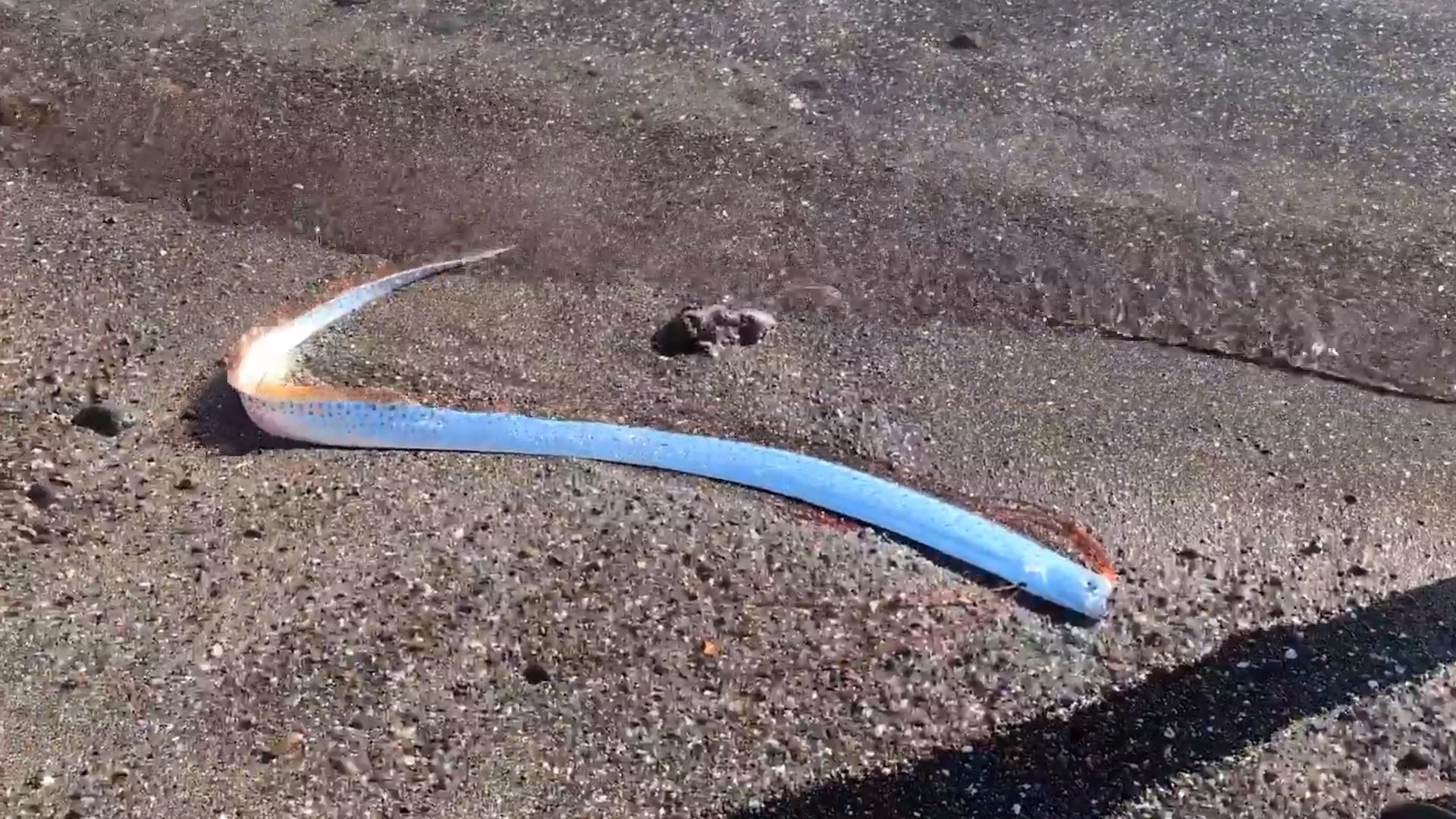
Rare Oarfish Sighting: Omen or Scientific Opportunity?
On February 9th, beachgoers in Baja California Sur, Mexico, witnessed an extraordinary encounter with a deep-sea dweller: a shimmering oarfish. This enigmatic creature, reaching lengths of up to 50 feet, is rarely seen alive and is steeped in folklore as a harbinger of impending doom.
A Messenger from the Depths
In Japanese folklore, the oarfish, known as "ryugu no tsukai," is believed to serve as a messenger from the sea god Ryūjin. Its appearance near the surface is said to portend earthquakes. While scientists remain skeptical of this connection, the oarfish’s rarity and association with deep-sea tremors have captured the imagination for centuries.
Unveiling the Mystery
In 2024, Southern California experienced a series of oarfish sightings, all of which involved deceased specimens. While the reasons behind these strandings remain elusive, scientists believe that climate change and the El Niño-La Niña cycle may play a role.
Scientific Significance
Despite the ominous implications associated with oarfish sightings, scientists view them as valuable opportunities to study this enigmatic species. Each specimen provides insights into their behavior, biology, and potential vulnerability to environmental changes.
Examining the Evidence
In August 2024, a 12-foot-long oarfish was discovered by kayakers and snorkelers in San Diego’s La Jolla Cove. Subsequently, another oarfish was found dead in Huntington Beach in September. On November 6th, a third oarfish, approximately 10 feet in length, washed ashore in Encinitas.
Multiple Variables at Play
According to Ben Frable, a fish expert at the Scripps Institution of Oceanography, multiple factors may contribute to oarfish strandings, including shifts in climate patterns and ocean currents. The simultaneous appearance of three oarfish in different locations suggests that larger-scale environmental factors may be at play.
A Unique Opportunity for Research
Each oarfish specimen collected provides scientists with invaluable data to unravel the mysteries surrounding this elusive creature. By examining their feeding habits, reproductive cycles, and physiological adaptations, researchers hope to gain a better understanding of their role in the marine ecosystem and their potential vulnerability to anthropogenic impacts.
Conclusion
While the folklore associated with oarfish may evoke a sense of unease, these rare sightings also present a unique opportunity for scientific inquiry. By studying these deep-sea giants, we can deepen our knowledge of the ocean’s biodiversity and unravel the complexities of the marine environment. As such, the appearance of oarfish near the surface should be approached with a blend of awe and scientific curiosity, offering both a glimpse into ancient beliefs and a pathway to new discoveries.
